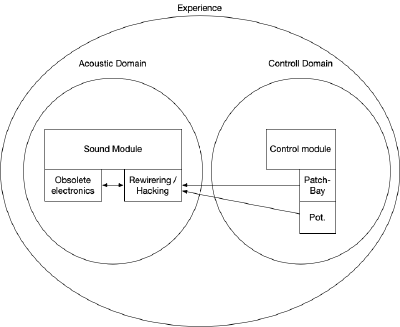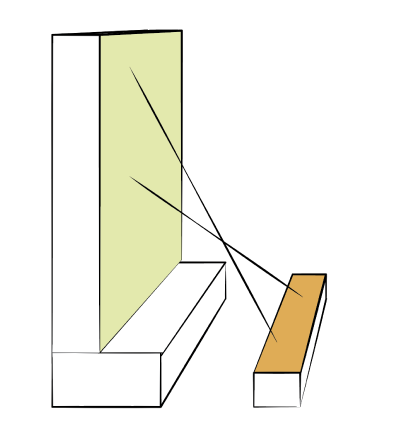GMU:Sustainable Aesthetics/Friedrich Wilhelm Albrecht Pittelkow: Difference between revisions
mNo edit summary |
|||
| (10 intermediate revisions by the same user not shown) | |||
| Line 6: | Line 6: | ||
An interesting question is: How can we create digital art and their available aesthetics, and therefore is easily reproduced but has a sustainable economic and ecological value? | An interesting question is: How can we create digital art and their available aesthetics, and therefore is easily reproduced but has a sustainable economic and ecological value? | ||
Nothing is so sustainable as natural science and natural constants, e.g. the Planck constant, which is fundamental for quantum physics, the fundamental of everything, or the Planck length that describes the shortest (known) length possible. All these can described by a mathematical equation. | |||
Nothing is so sustainable as natural science and natural constants, e.g. the | |||
It should be possible to create an artwork based on a set of equations. | It should be possible to create an artwork based on a set of equations. | ||
Let's think about a painting as an example. Each point on the canvas can be described by a coordinate and a color. Each of this is described by a set of equations. This is the output of said set. But this set has also inputs in the form of variables and constants. The variables can be changed. | Let's think about a painting as an example. Each point on the canvas can be described by a coordinate and a color. Each of this is described by a set of equations. This is the output of said set. But this set has also inputs in the form of variables and constants. The variables can be changed. Where the same variables create the same output each time. | ||
So, the artwork is not the output itself, but the act of creating it. | So, the artwork is not the output itself, but the act of creating it. | ||
= Forgotten electronics → Circuit anarchy = | |||
Old electronics, that we once valued, are going to waste and are rarely recycled. Precious materials go to waste and the energy that used for the initial production can never be recovered. | |||
For the project, old electronics, which would be discarded, are reused to create different sounds and a soundscape. | |||
Therefore, different techniques such as circuit bending and the recording of electromagnetic fields are used. | |||
Circuit bending is the technique of rewiring existing circuits to expand or change their intended use. | |||
The recording provided below is a recording of the electromagnetic field produced by a broken wireless headphone. | |||
[[:File:fr_elec1.mp3]] | |||
= Concept // Technical description = | |||
[[File:fp_ca_sV_1.png|400px]] | |||
Using discarded and obsolete electronic components to create an interactive sound installation and a musical instrument. By hacking of circuits as rewiring, it is possible to create oscillations which results in an audible signal. | |||
The result of this process shall be a setup of hacked circuits that can be explored as an interactive installation or can be used as a musical instrument. | |||
Therefor, the setup constricts of two modules. One is control interface (patch-bay, rotary controls). The other model is "sound module", which is built out of obsolete electronics. | |||
The modular design allows adaptation to different applications, e.g. an installation or as an instrument. | |||
[[File:Screenshot 2022-12-13 at 05.37.08.png|400px]] | |||
Latest revision as of 05:07, 13 December 2022
Aesthetics isn't only a surface, an Image, a branding, but it's also an atmosphere in which experience happens. You could state, that the fictional world dominates the real world. You can see this in economy where e.g. advertisement and materials shapes a view on products and their value (and also politics). Since art is not created in a vacuum, the reception changes over time. That creates the problem, that the meaning of an art piece is not always sustainable in the intended way.
Also, art is reproducible through severely processes, especially digital art, which can be reproduced without loss in quality. An interesting question is: How can we create digital art and their available aesthetics, and therefore is easily reproduced but has a sustainable economic and ecological value?
Nothing is so sustainable as natural science and natural constants, e.g. the Planck constant, which is fundamental for quantum physics, the fundamental of everything, or the Planck length that describes the shortest (known) length possible. All these can described by a mathematical equation.
It should be possible to create an artwork based on a set of equations. Let's think about a painting as an example. Each point on the canvas can be described by a coordinate and a color. Each of this is described by a set of equations. This is the output of said set. But this set has also inputs in the form of variables and constants. The variables can be changed. Where the same variables create the same output each time.
So, the artwork is not the output itself, but the act of creating it.
Forgotten electronics → Circuit anarchy
Old electronics, that we once valued, are going to waste and are rarely recycled. Precious materials go to waste and the energy that used for the initial production can never be recovered.
For the project, old electronics, which would be discarded, are reused to create different sounds and a soundscape. Therefore, different techniques such as circuit bending and the recording of electromagnetic fields are used. Circuit bending is the technique of rewiring existing circuits to expand or change their intended use.
The recording provided below is a recording of the electromagnetic field produced by a broken wireless headphone.
Concept // Technical description
Using discarded and obsolete electronic components to create an interactive sound installation and a musical instrument. By hacking of circuits as rewiring, it is possible to create oscillations which results in an audible signal. The result of this process shall be a setup of hacked circuits that can be explored as an interactive installation or can be used as a musical instrument. Therefor, the setup constricts of two modules. One is control interface (patch-bay, rotary controls). The other model is "sound module", which is built out of obsolete electronics. The modular design allows adaptation to different applications, e.g. an installation or as an instrument.

